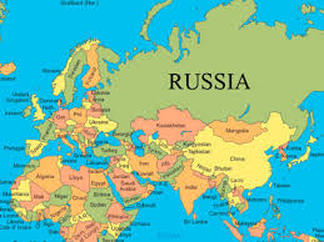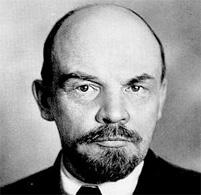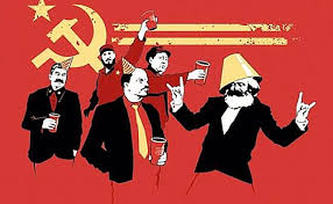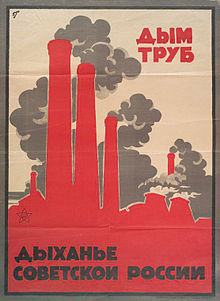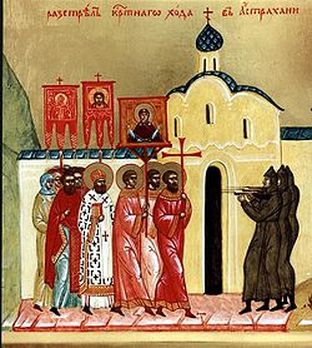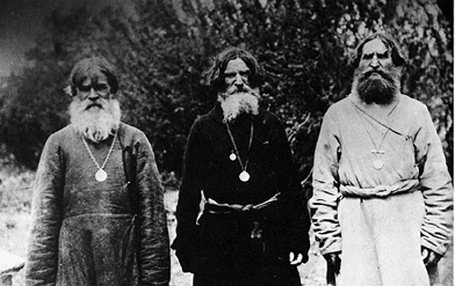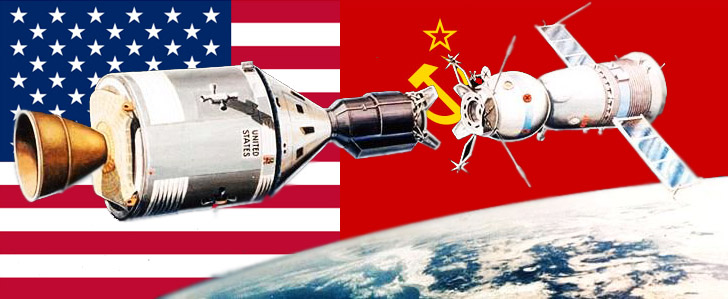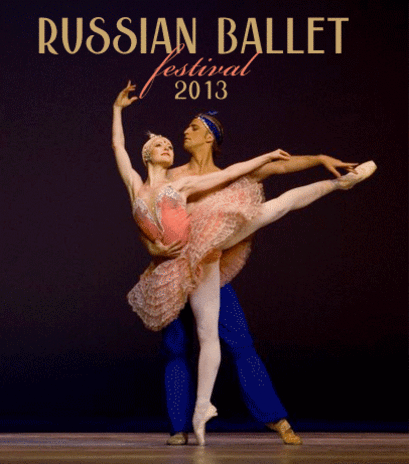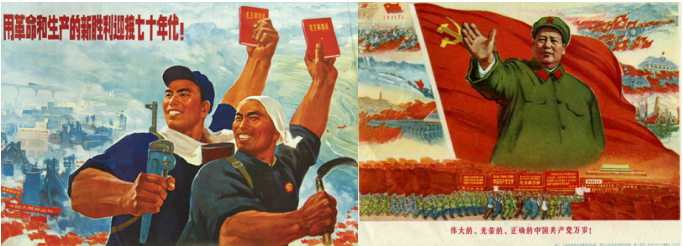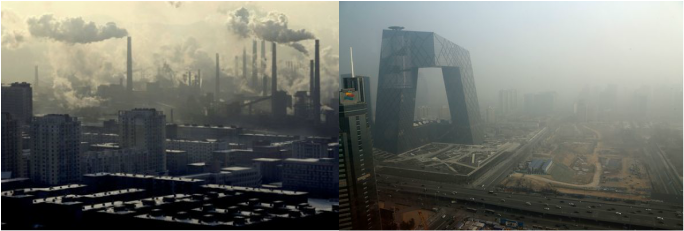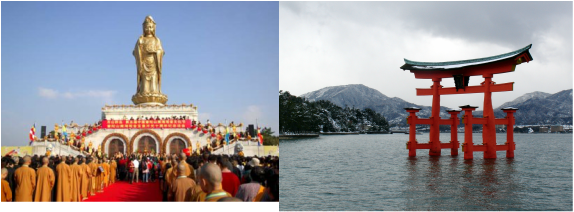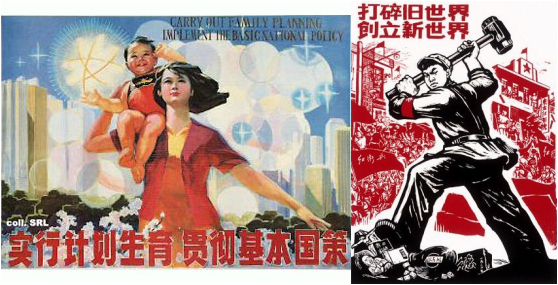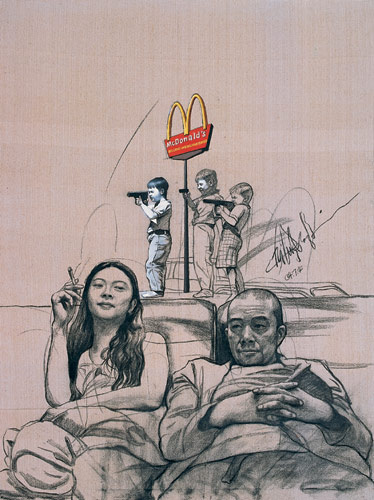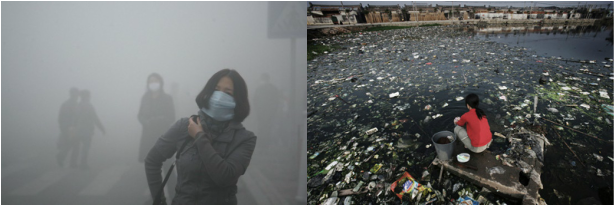Persian Chart : EAST Asia 1900-Present
By julianna Smith
Political
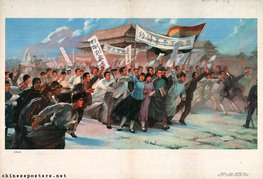
· May the Fourth Movement – The May the Fourth Movement began in 1917, and the May the Fourth Incident took place on May 4, 1919. The incident began because Chinese people were in favor of transforming China into a liberal democracy and against the Japanese and the Versailles Peace Treaty after World War One.
http://chineseculture.about.com/od/historyofchina/a/May-Fourth-Movement.htm
Information taken from Stearn’s World Civilizations: The Global Experience
http://chineseculture.about.com/od/historyofchina/a/May-Fourth-Movement.htm
Information taken from Stearn’s World Civilizations: The Global Experience
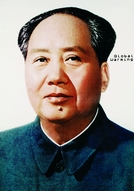
· Mao Zedong – Mao Zedong was born in 1893, and died in 1976. He was the leader of the Chinese Communist Party and a chairman of the People’s Republic of China. He initiated the ‘Great Leap Forward’ in 1958 as well as the ‘Cultural Revolution’ in 1966. Through these two movements, Mao wanted to reform China culturally, industrially, and economically.
http://www.bbc.co.uk/history/historic_figures/mao_zedong.shtml
http://www.bbc.co.uk/history/historic_figures/mao_zedong.shtml
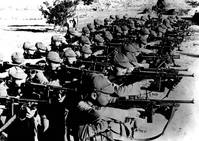
· Second Sino-Japanese War – In the years 1937-1945, the Sino Japanese War was fought between China and Japan. The war was primarily fought over who ruled Korea, which led to Korea’s independence. China fought to resist Japanese influence as well as the territorial conquest of the Japanese Empire. http://www.britannica.com/EBchecked/topic/546188/Sino-Japanese-War
· The Rape of Nanking – In December of 1937, The Japanese Imperial Army came into the Chinese city of Nanking. Here, the Japanese murdered 300,000 Chinese citizens as well as raped 20,000 to 80,000 Chinese women. The Rape of Nanking can be seen as a consequence of the Second Sino Japanese War, and can be counted as one of the greatest atrocities in the time of World War II.
http://www.historyplace.com/worldhistory/genocide/nanking.htm
http://prezi.com/n4juprxbr-mn/consequences-of-the-second-sino-japanese-war/
http://www.historyplace.com/worldhistory/genocide/nanking.htm
http://prezi.com/n4juprxbr-mn/consequences-of-the-second-sino-japanese-war/
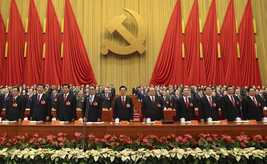
· Chinese Communist Party – The Chinese Communist Party was founded in 1921, and was heavily influenced by Marxism. The rise of the Chinese Communist Party was triggered by the victory of the Bolsheviks Party in Russia.
http://www.britannica.com/EBchecked/topic/112450/Chinese-Communist-Party-CCP
http://www.britannica.com/EBchecked/topic/112450/Chinese-Communist-Party-CCP
Economy
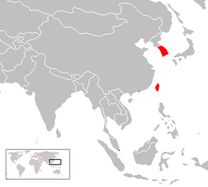
The Four Tigers – The Four Tigers refer to the increased economic growth in four areas that include Hong Kong, China and South Korea. Ever since the 1960s, these two East Asian areas have industrialized very quickly and have been able to keep elevated levels of economic growth. Hong Kong is one of the world’s largest financial centers, and South Korea is one of the world’s leading automobile and electronic providers.
http://www.investopedia.com/terms/f/four-asian-tigers.asp
http://www.investopedia.com/terms/f/four-asian-tigers.asp
·Japan’s Economy – Japan’s economy is currently ranked the 25th economy in the world. After World War II, Japan made a strong effort to modernize and industrialize. Consumerism grew in Japan in the 1950s and 60s. Japan has become a chief exporter of high quality goods. However, when land and stock prices collapsed in the 1990s, Japan went into a recession.
http://www.heritage.org/index/country/japan
http://web-japan.org/kidsweb/explore/history/q6.html
http://www.heritage.org/index/country/japan
http://web-japan.org/kidsweb/explore/history/q6.html
China’s Economy – The Chinese economy has been growing at a very fast rate, so fast, that it is expected to surpass the United States as the Number 1 Economy in the World.
http://www.bbc.com/news/world-asia-pacific-13017882
http://www.bbc.com/news/world-asia-pacific-13017882
Religion
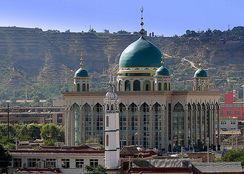 This mosque in China is an example of relgious diversity in China
This mosque in China is an example of relgious diversity in China
Religious Freedom in China – The Law of the People’s Republic of China protects the religious lives of its citizens. The Chinese Cultural Revolution, however, did take a toll on religion, where it suppressed religious freedom in China. Today, China is very religiously diverse, with citizens practicing Buddhism, Catholicism, Taoism, Islam, and Protestantism. Religious organizations are completely separated from the government. http://chineseculture.about.com/library/china/whitepaper/blsreligion.htm
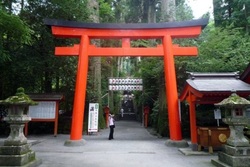 Shinto Shrine
Shinto Shrine
Religion in Japan – In present times, Buddhism and Shinto are Japan’s two main religions. The religion of Shinto started in Japan, while Buddhism diffused into Japanese culture from India. Although religion is practiced, it is not a strict part in Japanese society.
http://www.japan-guide.com/e/e629.html
http://www.japan-guide.com/e/e629.html
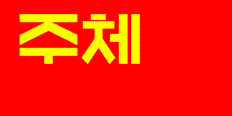
Juche (North Korea) – Juche is a religion, modeled after Christianity, that worships Kim II-sung, North Korea’s first dictator, as its god. Although he died in 1994, he is worshipped as the “Eternal Emperor” of North Korea. Instead of Jesus as in Christianity, Kim II-sung’s son, Kim Jong Il, is worshipped as the son of god. Lastly, Kim-Jong soko, Kim il-sung’s wife, is worshipped as the holy spirit.
http://www.billionbibles.org/north-korea/juche-religion.html
http://www.billionbibles.org/north-korea/juche-religion.html
Society
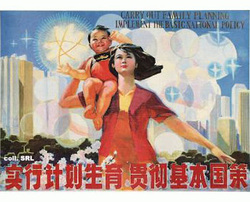 One Child Policy Propaganda
One Child Policy Propaganda
One Child Policy (China) – Population growth became out of control in China soon after the People’s Republic of China was formed. In an attempt to control this rapid growth, the Chinese government instated a law that a Chinese couple could only have one child. Since boys are favored in China, female infanticide is very common. It is practiced to allow couples to eventually give birth to a boy.
http://content.time.com/time/world/article/0,8599,1912861,00.html
http://content.time.com/time/world/article/0,8599,1912861,00.html
Boys over girls (China) – The idea that boys are superior to girls are a very widespread idea in China. In fact, 108 boys are born to for every 100 girls. Girls are treated differently than boys. The Chinese generally have lower expectations of girls, and girls may not be protected against certain risks.
http://www.unicef.cn/en/index.php?c=index&a=lists&catid=135
http://www.unicef.cn/en/index.php?c=index&a=lists&catid=135
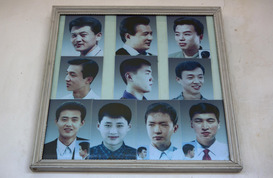 A chart of hairstyles North Korean men are allowed to wear
A chart of hairstyles North Korean men are allowed to wear
North Korean Society – Since North Korea is still a communist country, many aspects of society are still controlled by the North Korean government. Media of the outside world is not allowed, allowing the North Korean government to brainwash its citizens. Even the style of haircut is chosen by the North Korean government.
http://www.bbc.com/news/world-asia-pacific-15256929
http://www.bbc.com/news/world-asia-pacific-15256929
Innovations/Inventions
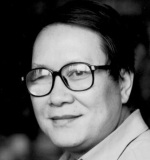
Qin Hui – Born in 1953, Qin Hui is an economic historian at Tsinghua University in Beijing. He has a special focus on peasantry and land reforms.
http://www.thechinastory.org/key-intellectual/qin-hui-%E7%A7%A6%E6%99%96/
http://www.thechinastory.org/key-intellectual/qin-hui-%E7%A7%A6%E6%99%96/
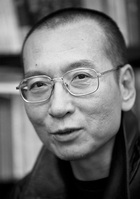
Liu Xiaobo – Born in December of 1955, Liu Xiaobo is a advocate for human rights in China. When he was younger, he took part in the student protest in Tiananmen Square, which earned him two years in prison. Liu favors a more democratic model of China. In 2008, when he was outspoken about his democratic beliefs, he was sentenced to 11 years in prison. He continually denies that he committed a crime. He won the Nobel Peace Prize in 2010 because of his “long and non violent struggle for fundamental human rights in China.”
http://www.nobelprize.org/nobel_prizes/peace/laureates/2010/xiaobo-facts.html
http://www.nobelprize.org/nobel_prizes/peace/laureates/2010/xiaobo-facts.html
 Blu Ray DVD Player
Blu Ray DVD Player
Japanese Inventions – Japan has invented many things that contribute to the tech world of our society today. For instance, the Japanese have created the Pocket Calculator, the camcorder, the compact disc, the memory card, the video cassette, as well as newer technology such as the Blur ray DVD player and the LCD television.
http://www.ranker.com/list/list-of-japanese-inventions/wayne-szalinski
http://www.ranker.com/list/list-of-japanese-inventions/wayne-szalinski
Arts and Architecture
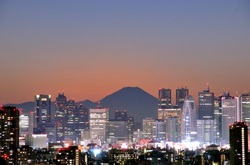 Tokyo Skyline
Tokyo Skyline
Tokyo Modern Architecture – Towards the end of the 20th century, Tokyo, Japan, has become a major city filled with many skyscrapers. Tokyo is said to be building up skyscrapers faster than almost any other place in the world. Some famous skyscrapers in Tokyo include Saint Luke’s Tower, Shinjuku Center Building, and the Midtown Tower.
http://www.wa-pedia.com/japan-guide/Tokyo_architecture_skyscrapers.shtml
http://muza-chan.net/japan/index.php/blog/top-10-tokyo-skyscrapers
http://www.wa-pedia.com/japan-guide/Tokyo_architecture_skyscrapers.shtml
http://muza-chan.net/japan/index.php/blog/top-10-tokyo-skyscrapers
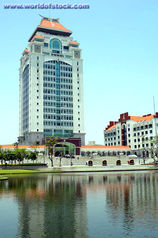 traditional and modern Chinese architecture
traditional and modern Chinese architecture
New Chinese Architecture – During the 1920s and 1930s, western styles of architecture made its way into China. The intertwining of classic Chinese Architecture and Western Architecture help to make up the architecture of China today. There are three methods for the “national style” of modern Chinese architecture is 1) the ancient method, which imitates the architecture of Ancient China, 2) Large scale buildings with elaborate requirements, and 3) for buildings that are simplistic. http://www.chinaculture.org/gb/en_artqa/2003-09/24/content_39014.htm
Near Geography
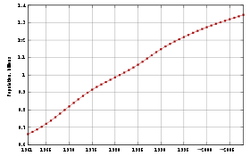
Chinese Population Growth – China has remained to be the most populated country in the world. In 1953, China released their first modern census, stating that 583,000,000 people lived in the country. Between 1953 and the present, China’s population has grown to be more than the whole population of Europe. Currently, China has a population of almost 1,400,000,000.
http://www.worldometers.info/world-population/
http://afe.easia.columbia.edu/special/china_1950_population.htm
http://www.worldometers.info/world-population/
http://afe.easia.columbia.edu/special/china_1950_population.htm
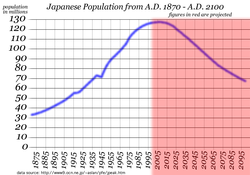 Current and predicted rate
Current and predicted rate
Japanese Population- While China is rapidly growing population wise, Japan’s population is decreasing. Currently, Japan is ranked the tenth country in terms of population, with almost 127,000,000 people. In 2012 Japanese population was 127.9 million, which shows a decrease in the population. http://worldpopulationreview.com/countries/japan-population/
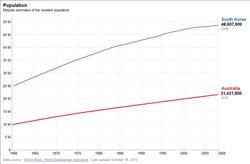 Blue line represents S. Korea
Blue line represents S. Korea
South Korea Population Growth – Currently, South Korea’s population is growing at a rate of .45% every year. South Korea is home to 50,000,000 people. Its population density is at least ten times as much as the international average. South Korea’s population is projected to reach over 50 million by the year 2030.
http://worldpopulationreview.com/countries/south-korea-population/
http://worldpopulationreview.com/countries/south-korea-population/
Persain Chart : East Asia 1900-Present
By Julianna Smith
By Julianna Smith
Russia and eastern europe
Political
The Russo-Japanese War (1904-1905) was the first war in which an Asian power defeated a major European power. This war resulted between Japan and Russia over control of Korea and Manchuria. Russia's fleet could not mobilize quickly enough and allowed Japan to occupy Korea. Japanese victory made it one of the Great Powers; it ended with the Treaty of Portsmouth.
The Revolution of 1905 consisted of strikes by labor parties and peasants. Reforms were made to pacify the peasants. The changes implemented were not enough to satisfy everyone and eventually, the inability of the government to meet the demands of the people would lead to the Russian revolution in 1917.
The Russian revolution of 1917 brought the radical Bolsheviks headed by Lenin into power. The pressures of World War I triggered the outbreak of the revolution. Strikes and food riots broke out. Czar Nicholas II was removed and ended the Romanov dynasty. Russia saw a quick transition to communism. Because of the large peasant population, communist rule was most favorable.
From 1918-1921, a civil war occurred as many groups revolted against the communist regime. Tsarist generals, religiously faithful peasants, and many minority nationalities found a common enemy in the communist government.
The new communist government restored many foundations and institutions in Russia. Leon Trotsky raised the Red Army, and Lenin issued the NEP.
The Union of Soviet Socialist Republics, or USSR, was created by a new constitution.
After Lenin's death, intense rivalries between leaders, notably Trotsky and Stalin, ignited. Joseph Stalin emerged as the new leader of the Soviet Union. He was an authoritarian ruler who used police procedures to strictly control the state.
Although Russia initially made a deal with Hitler at the start of World War II, Germany turned around and attacked Russia. This attack brought an alliance between the Western powers and the United States and Russia. The war provided the opportunity for the Soviet Union to regain land in Eastern Europe at the expense of countries such as Poland, which was divided yet again.
The Russo-Japanese War (1904-1905) was the first war in which an Asian power defeated a major European power. This war resulted between Japan and Russia over control of Korea and Manchuria. Russia's fleet could not mobilize quickly enough and allowed Japan to occupy Korea. Japanese victory made it one of the Great Powers; it ended with the Treaty of Portsmouth.
The Revolution of 1905 consisted of strikes by labor parties and peasants. Reforms were made to pacify the peasants. The changes implemented were not enough to satisfy everyone and eventually, the inability of the government to meet the demands of the people would lead to the Russian revolution in 1917.
The Russian revolution of 1917 brought the radical Bolsheviks headed by Lenin into power. The pressures of World War I triggered the outbreak of the revolution. Strikes and food riots broke out. Czar Nicholas II was removed and ended the Romanov dynasty. Russia saw a quick transition to communism. Because of the large peasant population, communist rule was most favorable.
From 1918-1921, a civil war occurred as many groups revolted against the communist regime. Tsarist generals, religiously faithful peasants, and many minority nationalities found a common enemy in the communist government.
The new communist government restored many foundations and institutions in Russia. Leon Trotsky raised the Red Army, and Lenin issued the NEP.
The Union of Soviet Socialist Republics, or USSR, was created by a new constitution.
After Lenin's death, intense rivalries between leaders, notably Trotsky and Stalin, ignited. Joseph Stalin emerged as the new leader of the Soviet Union. He was an authoritarian ruler who used police procedures to strictly control the state.
Although Russia initially made a deal with Hitler at the start of World War II, Germany turned around and attacked Russia. This attack brought an alliance between the Western powers and the United States and Russia. The war provided the opportunity for the Soviet Union to regain land in Eastern Europe at the expense of countries such as Poland, which was divided yet again.
Economy
Lenin issued a decree for land redistribution to the peasantry and a state takeover of basic industry. In 1921, he issued the New Economic Policy (NEP). It promised free trade for small businesses and peasant landowners. This combined state economic policies with individual initiative.
The economy and industrialization in the USSR was state-directed. Stalin redistributed the land and borrowed some Western techniques. Collectivization was the process of creating large, state-run farms. Many kulaks, or landowning peasants, resented this reform and refused to cooperate. This met a violent response from the government. Millions were killed or deported. Although collective farms were meant to increase agricultural production, agriculture continued to be weak in the economy.
The five-year plans set clear goals for production. Many factories for metallurgy, mining, and electricity were opened to industrialize Russia. The focus was heavy industry. During the Great Depression, Soviet output in machinery and metal products grew 14 times larger.
Lenin issued a decree for land redistribution to the peasantry and a state takeover of basic industry. In 1921, he issued the New Economic Policy (NEP). It promised free trade for small businesses and peasant landowners. This combined state economic policies with individual initiative.
The economy and industrialization in the USSR was state-directed. Stalin redistributed the land and borrowed some Western techniques. Collectivization was the process of creating large, state-run farms. Many kulaks, or landowning peasants, resented this reform and refused to cooperate. This met a violent response from the government. Millions were killed or deported. Although collective farms were meant to increase agricultural production, agriculture continued to be weak in the economy.
The five-year plans set clear goals for production. Many factories for metallurgy, mining, and electricity were opened to industrialize Russia. The focus was heavy industry. During the Great Depression, Soviet output in machinery and metal products grew 14 times larger.
Religion
The Communist party not only regulated the economy, but also attempted to transform the culture and religion. It restricted the Orthodox Church and all other religions and promoted a secular, Marxist, scientific orthodoxy. Art and literature were carefully regulated to promote the beliefs of the party. Education was reconstructed to create technicians and bureaucrats that had the right mind of thinking. Mass ceremonies such as May Day parades were created to strengthen devotional ties to the Soviet Union.
The party did not completely abolish the Orthodox Church, but limited its spread. It was not allowed to teach the religion to anyone under the age of 18, and children were taught in school that religion was nothing but superstition.
Jews did not have freedom of religion. The Soviet government defined Jews as enemies of the state.
Muslims had more freedom than the Jews did on the condition of loyalty to the state.
The Communist party not only regulated the economy, but also attempted to transform the culture and religion. It restricted the Orthodox Church and all other religions and promoted a secular, Marxist, scientific orthodoxy. Art and literature were carefully regulated to promote the beliefs of the party. Education was reconstructed to create technicians and bureaucrats that had the right mind of thinking. Mass ceremonies such as May Day parades were created to strengthen devotional ties to the Soviet Union.
The party did not completely abolish the Orthodox Church, but limited its spread. It was not allowed to teach the religion to anyone under the age of 18, and children were taught in school that religion was nothing but superstition.
Jews did not have freedom of religion. The Soviet government defined Jews as enemies of the state.
Muslims had more freedom than the Jews did on the condition of loyalty to the state.
Society
As Russia became industrialized, it acquired many features of an industrial society. Many people were flocked to crowded urban areas where large numbers of people were squeezed into inadequate housing. Factory owners and overseers enforced strict discipline among the workers. The government also created many welfare programs. Workers could have meeting houses, recreational programs, and protection in case of illness or old age. In their free time, people played or watched sports, films, and television.
In urban society, the tendency was to divide along class lines between workers and the middle class. Mangers and professional people who were members of the Communist party received special privileges that set them apart from everyone else.
Because of migration to urban areas, families loosened ties with extended family and focused on the nuclear family. Birth rates dropped, infant mortality rates declined, schooling periods grew longer, and consumer expectations increased. Smaller families were more suited to living under these conditions. Parents put great effort into their children's education. Children were strictly disciplined in school and at home.
As Russia became industrialized, it acquired many features of an industrial society. Many people were flocked to crowded urban areas where large numbers of people were squeezed into inadequate housing. Factory owners and overseers enforced strict discipline among the workers. The government also created many welfare programs. Workers could have meeting houses, recreational programs, and protection in case of illness or old age. In their free time, people played or watched sports, films, and television.
In urban society, the tendency was to divide along class lines between workers and the middle class. Mangers and professional people who were members of the Communist party received special privileges that set them apart from everyone else.
Because of migration to urban areas, families loosened ties with extended family and focused on the nuclear family. Birth rates dropped, infant mortality rates declined, schooling periods grew longer, and consumer expectations increased. Smaller families were more suited to living under these conditions. Parents put great effort into their children's education. Children were strictly disciplined in school and at home.
Innovations
The Space Race between the Soviet Union and the United States resulted due to the intense rivalry between the two superpowers. Each side was developing rockets and missiles as long-range weapons. However, this technology could also be used to send objects or organisms into space. This led to the Space Race and the race to the moon. The Russians deployed Sputnik while the United States launched the Apollo missions.
The Soviet got caught up in an infamous arms race with the United States in an event known as the Cold War. The USSR developed the atomic and hydrogen bombs and deployed missiles and naval forces that matched the power of those of the United States.
The Soviet Nuclear Weapons Program was developed in response to the Manhattan Project in the United States. The United States had dropped two bombs on Japan during World War II, but they were surprised how quickly Russia came to possess that knowledge. The term MAD (mutually assured destruction) was used in the context of the Cold War.
The Space Race between the Soviet Union and the United States resulted due to the intense rivalry between the two superpowers. Each side was developing rockets and missiles as long-range weapons. However, this technology could also be used to send objects or organisms into space. This led to the Space Race and the race to the moon. The Russians deployed Sputnik while the United States launched the Apollo missions.
The Soviet got caught up in an infamous arms race with the United States in an event known as the Cold War. The USSR developed the atomic and hydrogen bombs and deployed missiles and naval forces that matched the power of those of the United States.
The Soviet Nuclear Weapons Program was developed in response to the Manhattan Project in the United States. The United States had dropped two bombs on Japan during World War II, but they were surprised how quickly Russia came to possess that knowledge. The term MAD (mutually assured destruction) was used in the context of the Cold War.
Arts and Architecture
Although much industrialization and borrowing from the West had occurred, Russia did not adopt Western culture. It rejected modern Western art styles and retained earlier Russian styles. Russian orchestras and ballets upheld rigorous standards of excellence. The state supported a new style of art called socialist realism, which glorified heroic workers, soldiers, and peasants. During the pre-revolutionary era and the 1920s, modern art gave way to neoclassical paintings and sculpture under Stalin. Many old buildings were preserved, but new Soviet architecture emphasized functional, classical lines and monumental buildings.
After 1960, some elements of Western culture leaked into Russia and Eastern Europe. Jazz and rock bands emerged by the 1980s; however, many were still suspicious of Western culture.
During this period, The Russian Five or Mighty Five - César Cui, Aleksandra Borodin, Mily Balakirev, Modest Mussorgsky, and Nikolay Rimsky-Korsakov - banded together to promote a distinctly Russian style of music. Among the most popular pieces from this group are Mussorgsky's Night on Bald Mountain (video below) and Pictures at an Exhibition as well as Rimsky-Korsakov's The Flight of the Bumblebee (video below) and Scheherazade.
Near Geographic
The dissolution of the Soviet Union created 15 new independent nations: Armenia, Azerbaijan, Belarus, Estonia, Georgia, Kazakhstan, Kyrgyzstan, Latvia, Lithuania, Moldova, Russia, Tajikistan, Turkmenistan, Ukraine, and Uzbekistan.
Siberia is a vast tundra that makes up 77% of Russia, but is not densely populated due to the harsh conditions, especially during the winter.
www.wabashcenter.wabash.eduhttp://www.jstor.org/discover/10.2307/307982?uid=3739920&uid=2129&uid=2&uid=70&uid=4&uid=3739256&sid=21103806991031
sperglord.wordpress.comnformation taken from Robert W. Strayer’s Ways of the World Second Edition
By Sophia Gonzalez-Mayagoitia
NORTH america:
1900s' - present
by: America guerrero
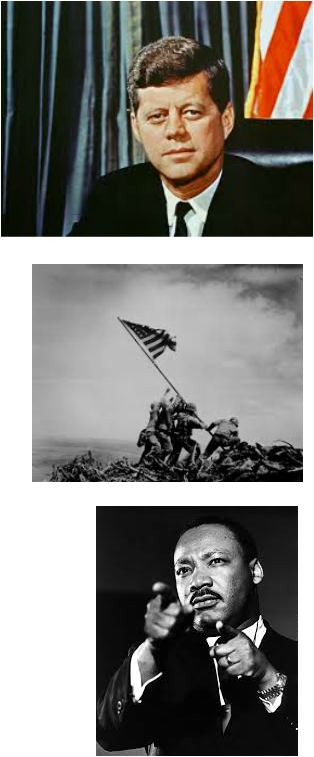
P(olitical):
- 1900 Theodore Roosevelt is elected as the Vice President of The United States
- 1901 McKinley is assassinated and Theodore Roosevelt becomes President
- 1908 William Howard Taft becomes President
- in 1917 the US enters World War I and ends in 1918
- 1919 the 19th amendment and the Treaty of Versailles is established
- 1932, Franklin Roosevelt is elected President
- 1937 the German airship "HINDER BURG" burns in New Jersey
- 1941, Japan attacks in Pearl Harbor and the US declares war with Japan
- this year too, Hitler declares war with the US
- May of 1942, the US surrenders the Philippines to Japan and June that year the Battle of Midway, Japanese Fleet turned back with heavy losses. In August of that same year, American Marines land on Guadalcanal beginning “island hopping” assault against Japan.
- November of 1942 America invades North Africa
- January of 1943 Roosevelt and Churchill meet in Casablanca, North Africa, and November that year FDR, Churchill and Stalin meet at Teheran, Iran.
- Truman defeats Dewey and he is re-elected in 1948
- 1951, 22nd Amendment prohibits more than two presidential terms
- 1953, Eisenhower is elected President and Nixon is elected Vice President
- 1960 John F. Kennedy is elected president and Johnson is elected Vice President
- 1963 KENNEDY IS ASSASSINATED
- in 1964 U.S. Destroyer allegedly attacked in Gulf of Tonkin. Congress resolves that President Johnson given authority to use all power to repel attacks on U.S. forces… this resolution formed basis for massive escalation of U.S. military action in Vietnam without declaration of war.
- 1968, MLK and RFK are assassinated
- 1971, Constitutional Amendment (26) lowers voting age to 18
- George Bush becomes president in 2000
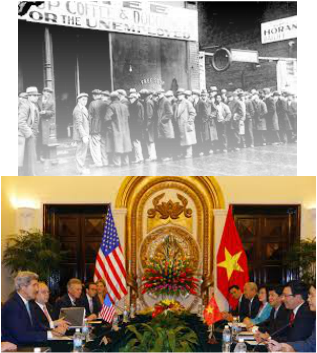
E(conomy):
- 19001 Carnegie sells the Carnegie Steel company for $225 million
- NAACP is founded
- 1919 Tr and Carnegie dies
- 1929 the Great Depression begins do to the decrease in Stock Market and is at its worse in 1931 when about 12% of Americans are unemployed
- 1933 FDR is Inaugurated the "100 days"
- 1949 NATO is established
- U.S. bars trade with Communist China in 1950
- 1955, the US begins to aid economically South Vietnam
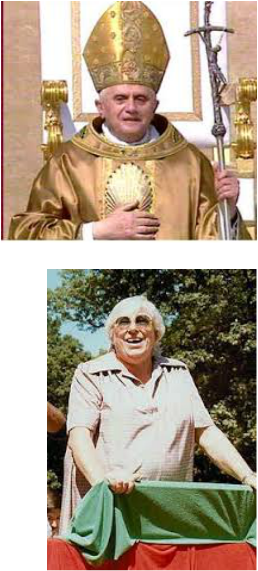
R(eligion):
- in 1910, the Christian Endeavor Society of Missouri, an early forerunner of the American Religious Rights, instituted a campaign to ban movies depicting kissing between non-relatives.
- 1925, Florida passes a law making all public schools to have daily bible reading
- in 1960, Madalyn Murray made a declaration to stop the obligation of bible reading in public schools making religion separate from political issues and school matters, it will only be up to the people.
- And in 1964, there was a law that prohibited unemployment and resections to atheists
- in 1973, the National Council of the US Catholic Bishops announced that anyone undergoing or performing an abortion should be banned from the Roman Catholic Church.
- 1978, African American were allowed to serve as Spiritual leaders.
- Up to now the United States is a religiously diverse nation.
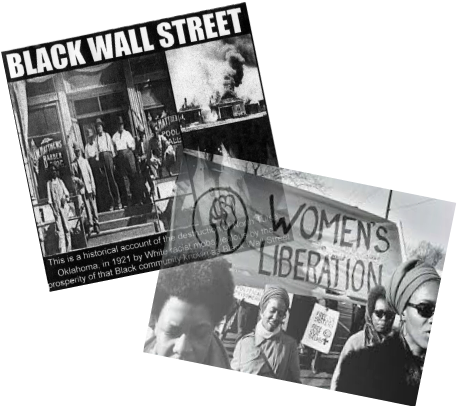
S(ociety):
- 1912 more than 1000 African Americans are lynched
- in 1947 Jackie Robinson becomes first African American major league baseball player
- Montgomery Bus Boycott and Martin Luther King becomes prominent in 1955
- Women ordained in the Presbyterian Church
- the U.S. Supreme Court orders immediate desegregation of schools
- in 1957 Congress passes Civil Rights act prohibiting discrimination in public. Nevertheless continued resistance to integration in South.
- JFK institutes the Peace Corps in 1961
- 1965, there are major Race Riots in Watts area of L.A.
- in 1967, Thurgood Marshall becomes first African American on U.S. Supreme Court. And Black mayors are elected in Cleveland, Ohio and Gary, Indiana.
- finally in 1969, Yale, Bowdoin and Colgate admit women
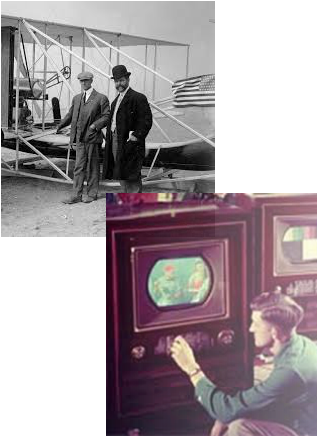
I(nnovation):
- 1903, the Wright brothers make their first flight
- 1908, Ford company makes model T cars
- in 1960 the Soviets launch dogs and mice into space and bring them back alive.
- in 1965, 5 million colored TVs are made
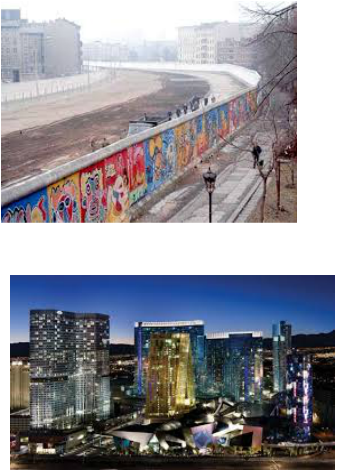
A(arts and architecture):
- in 1961 the Berlin Wall is constructed
- 1902,Otto Wagner's Viennise Stadtbahn railway system is completed.
- 1905, Wright designs Unity Temple in Illusions
- 1913 – Cass Gilbert completes the Woolworth Building in New York.
- 1921, Frank Lloyd Wright completes his Hollyhock House for Aline Barnsdall Los Angeles, begun in 1917
- 1930, William Van Allan completes the Crysler Building, an Art Deco skycraper in New York city, USA
- 1950, Earnest House completed in Santa Monica California, designed by Charles and Ray Earnest.
- 1972, TheTransamerica Pyramid in San Francisco, California, designed by William Pereira, is completed
- 2009 , City Center opens on the Las Vegas Strip in Paradise, Nevada. This project is the largest privately funded construction project in the history of the United States
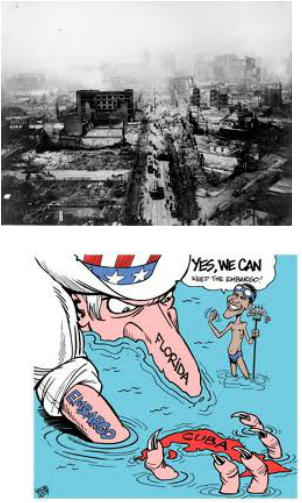
N(ear geography):
http://faculty.washington.edu/qtaylor/a_us_history/1900_2000_timeline.htm
http://www.metmuseum.org/toah/ht/?period=11®ion=na
http://en.wikipedia.org/wiki/Timeline_of_architecture
http://atheism.about.com/library/FAQs/religion/blrel_amrel_chron.htm
- 1906 a horrible earthquake occurs in San Francisco
- World War I begins in Europe in 1914
- 1946 U.S. troops in Korea, replacing Japanese
and grants independence to Philippines - in 1949 the U.S. supports Greek government and defeats Communists party during the civil war
- 1958 DDE sends U.S. Marines to Lebanon to suppress Arab nationalists
- Castro confiscates U.S. property in Cuba making the U.S. to begin embargo
http://faculty.washington.edu/qtaylor/a_us_history/1900_2000_timeline.htm
http://www.metmuseum.org/toah/ht/?period=11®ion=na
http://en.wikipedia.org/wiki/Timeline_of_architecture
http://atheism.about.com/library/FAQs/religion/blrel_amrel_chron.htm
P.e.r.s.i.a.n Chart east asia
By Christian estrada
Political
- After World War II, the U.S occupied Japan. Douglas MacArthur basically instructed the Japanese people how to set up their government. Their government is very similar to the United States it has a constitutional monarchy with a parliamentary government and a separate judiciary.
- In China the cultural revolution ended in 1976 with the death of Mao Zedong. Deng Xiaping gained power in 1977 after his death. He wanted to restore economic growth in China.
- Under Deng, the Chinese government established diplomatic relations with the U.S, increased China's world trade, made reforms, released many prisoners and reduced the police force's power. Even with theses efforts the government was still not willing to give up any of its basic power.
- In 1989 Chinese troops stormed through Tiananmen Square in the center of Beijing, killing and arresting thousands of pro-democracy protesters. The brutal Chinese government assault on the protesters shocked the West and brought denunciations and sanctions from the United States.
- They protested the political reforms given by Deng Xiaoping. Most of the protesters were students seeking a western way of life (democracy).
- Today, Xi Jinping is president of the People's Republic of China.
- In 1947 North and South Korea, officially proclaimed themselves as two separate nations.
- The Soviet Union helped develop the communist state of North Korea.
- The Korean War was fought for 3 years after after North Korea invaded South Korea.
- South Korea is a democracy and their government is modeled after the United States.
- Today Kim Jong-Un is the dictator of North Korea and Park Geun-hye is the President of South Korea, and she is the first woman to be elected as president.
Economic
- Today Japan tops the list of the most high tech country in the world. East Asia itself, with the exception of North Korea, all have booming economies.
- The Great Depression not only affected the United States but East Asia as well, because of its dependence on trade with the U.S and Europe. In both Japan and China unemployment and poverty rose.
- Trade with capitalist nations was encouraged in China although it still operated under a communist government.
- After World War II Japan's economy began to grow as many factories were rebuilt.
Religion
- Buddhism, generally, continues to be a major influence in Chinese religious life. In the earlier part of the twentieth century, there was an attempt to modernize and reform the tradition in order to attract wider support.
- In the 1960's Buddhism was suppressed. This was done under the order of the Peoples Republic of China. Many Buddhist priests and followers laid low, but recently Buddhism is making a come back.
- Japan's principal religions are Shinto and Buddhism; most Japanese practice both faiths. While the development of Shinto was radically altered by the influence of Buddhism, which was brought from China in the 6th cent.
- After the Qing Dynasty fell in 1911, Muslims were able to practice their faith. However, during the Cultural Revolution in China (1966 – 1976), religion in all its forms was brutally suppressed, which included the defacement of mosques and other places of worship.
- Christianity in China has grown since the economic reform in the 1970's loosened their control. However, religious practices are still tightly controlled by the government. China developed "China Christian Council" to monitor Christianity in China.
- Many Chinese people practice Christianity in their homes secretly.
Society
- The cultural revolution took place in China from 1966-1976, it was the coming forth of communism completely.
- Trading aloud Women in East Asia to play a more important role in society. They were able to obtain more important jobs. In the democratic countries they also found their way into office.
- The marriage law of 1950, guaranteed the equality of sexes in marriage.
- China soon overpopulated to the Peoples Republic of China developed the One Child Policy in 1979. It stated that families could only have one child. Recently China has announced that they are relaxing on the policy.
- Unlike America, Japan is a very homogeneous country.
- Few societies have changed as rapidly or as dramatically since the end of World War II as that of the Republic of Korea (South Korea). When the war ended in 1945, the great majority of the people living in the southern half of the Korean Peninsula were poor peasants.
- Now South Korea is booming with industry and urbanization.
Innovations.......
- East Asia can be looked at as the world leader in technological advances.
- The floppy disk was invented by Japanese inventor Dr. Yoshiro Nakamatsu in 1952. It was commercialized in 1971.
- Before the iPod, portable music was carried in cassettes and listened to on the Walkman, invented by Japanese inventor Nobutoshi Kihara in 1978.
- Ken Kutaragi was credited for inventing the original PlayStation console in 1994.
- South Korean youth replace cell phones every 11 months.
- South Korea became the first country to launch digital TV (DMV--Digital Media Broadcasting) to cell phones on May 16, 2005.
- South Koreans pay for their broadband at the lowest rates in the world.
arts
- After Modern art hit the western scene China soon followed.
- Li Kuchan, born in Gaotang County of Shandong Province, was a great painter, calligrapher and art educator. During the early years, he studied Western painting techniques in an art school in Beijing. Li well combined Western techniques and spirituality with traditional painting.
- Japan is a hotbed for contemporary architecture with lots of eye-catching creations mainly in the leading cities, especially Tokyo.
- Star architects include Ando Tadao, who has won numerous architectural prizes and has designed many buildings both in Japan and abroad.
- In China new apartment, office, and government buildings regularly rise up over older neighborhoods, and thousands have relocated to modern housing complexes.
Near geography
- East Asia's climate is similar to the United States in that it is a temperate climate, with colder winters and warm summers.
- Rice, the primary cereal crop grown in East Asia, is particularly suited to the warm, wet growing season.
- Japans is an island.
yaymicro.com
abcnews.go.com
www.biography.com
www.suembroidery.com
http://afe.easia.columbia.edu/main_pop/kpct/kp_geo.htm
http://www.japan-guide.com/e/e2111.html
http://www.china.org.cn/top10/2014-01/09/content_31124792_3.htm
www.wabashcenter.wabash.edu
sperglord.wordpress.com
http://www.washingtonpost.com/wp-srv/world/countries/japan.html?nav=el
http://www.art-and-archaeology.com/korea/history.html
http://edition.cnn.com/2007/WORLD/asiapcf/10/16/digital.korea/index.html?iref=newssearchecumenicalissues.blogspot.com
cassette-to-cd.baktrack.com
arts.cultural-china.com
en.wikipedia.org
www.taiwandocuments.org
abcnews.go.com
www.biography.com
www.suembroidery.com
http://afe.easia.columbia.edu/main_pop/kpct/kp_geo.htm
http://www.japan-guide.com/e/e2111.html
http://www.china.org.cn/top10/2014-01/09/content_31124792_3.htm
www.wabashcenter.wabash.edu
sperglord.wordpress.com
http://www.washingtonpost.com/wp-srv/world/countries/japan.html?nav=el
http://www.art-and-archaeology.com/korea/history.html
http://edition.cnn.com/2007/WORLD/asiapcf/10/16/digital.korea/index.html?iref=newssearchecumenicalissues.blogspot.com
cassette-to-cd.baktrack.com
arts.cultural-china.com
en.wikipedia.org
www.taiwandocuments.org
